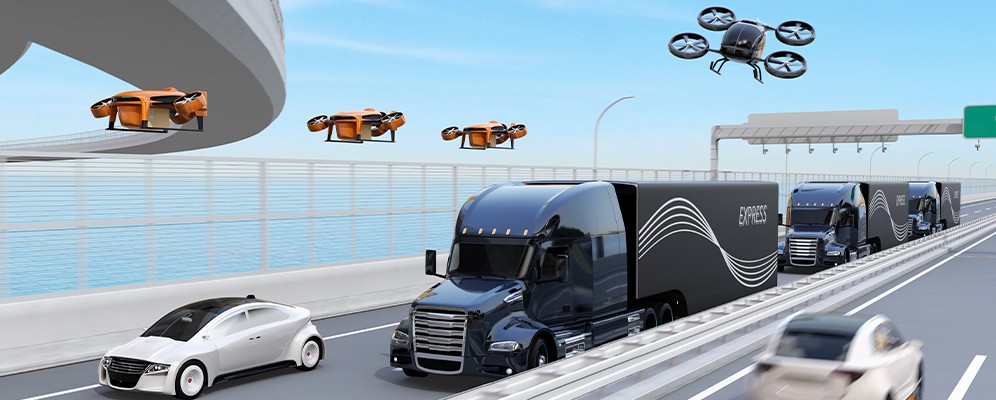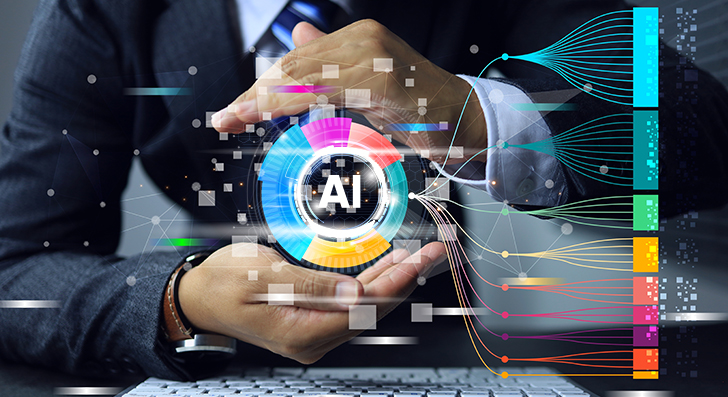The food delivery industry has experienced a meteoric rise in recent years, fueled by the increasing demand for convenience and the proliferation of on-demand services. Consumers have grown accustomed to the ability to order a wide variety of meals from their favourite restaurants with just a few taps on their smartphones. However, the current model of food delivery, relying heavily on human drivers, faces several challenges that hinder its efficiency, sustainability, and scalability.
The high costs associated with human drivers, including wages, fuel, and insurance, contribute to the overall expenses of food delivery services. Additionally, traffic congestion and unpredictable weather conditions can lead to delays and customer dissatisfaction. Moreover, the environmental impact of human-driven delivery vehicles, such as greenhouse gas emissions and pollution, is a growing concern as cities strive to achieve sustainability goals.
To address these limitations and pave the way for a more efficient, sustainable, and cost-effective food delivery system, autonomous vehicles and drones are emerging as promising technologies. These innovative solutions have the potential to revolutionise the industry by automating the delivery process, reducing costs, and minimising environmental impact.
Autonomous Vehicles for Food Delivery
Autonomous vehicles, equipped with advanced sensors, artificial intelligence, and sophisticated mapping systems, are poised to revolutionize the food delivery industry. These self-driving vehicles offer a promising solution to the challenges faced by traditional human-driven delivery methods, such as high costs, traffic congestion, and environmental concerns.
One of the primary advantages of autonomous vehicles is their potential to significantly reduce costs. By eliminating the need for human drivers, businesses can save on wages, fuel, and insurance expenses. This cost reduction can be passed on to consumers in the form of lower delivery fees or more affordable meal options. Furthermore, autonomous vehicles can operate more efficiently, minimizing idle time and reducing the overall delivery time.
Safety is a paramount concern when it comes to autonomous vehicles. These vehicles are equipped with a range of sensors, including cameras, lidar, and radar, to detect and avoid obstacles, pedestrians, and other vehicles. Advanced algorithms enable them to make real-time decisions and navigate complex road conditions. While autonomous vehicles are still under development, ongoing research and testing are continuously improving their safety performance.
Another significant benefit of autonomous vehicles is their potential to address environmental concerns. By reducing traffic congestion and minimizing the need for human-driven vehicles, autonomous delivery can contribute to lower greenhouse gas emissions and improve air quality. Additionally, autonomous vehicles can optimize their routes to minimize fuel consumption and reduce overall environmental impact.
Autonomous vehicles can also improve the efficiency and reliability of food delivery. They can operate 24 hours a day, seven days a week, without the need for breaks or rest periods. This can lead to faster delivery times and increased customer satisfaction. Moreover, autonomous vehicles can be equipped with temperature-controlled compartments to ensure the freshness and quality of food during delivery.
However, the widespread adoption of autonomous vehicles for food delivery faces several challenges. One of the major hurdles is the need for infrastructure improvements. Autonomous vehicles require accurate and up-to-date maps, as well as well-maintained roads and traffic signals. Additionally, regulatory frameworks and standards need to be established to govern the operation of autonomous vehicles on public roads.
Another challenge is the potential for job displacement. As autonomous vehicles become more prevalent, there may be a reduction in demand for human delivery drivers. It is crucial to consider the economic and social implications of this shift and explore strategies to mitigate job losses and create new opportunities.
Despite these challenges, the future of autonomous vehicles in food delivery looks promising. Ongoing research and development are addressing safety concerns, improving technology, and expanding the capabilities of these vehicles. As autonomous vehicles become more reliable and affordable, they are likely to play a significant role in shaping the future of the food delivery industry.
Drones for Food Delivery
Drones, once primarily associated with aerial photography and hobbyist activities, are now emerging as a promising technology for food delivery. With their ability to fly over obstacles, navigate complex terrains, and reach remote areas, drones offer a unique solution to the challenges faced by traditional delivery methods.
One of the most significant advantages of drones for food delivery is their speed and efficiency. Drones can travel much faster than ground vehicles, reducing delivery times and improving customer satisfaction. Additionally, drones can access areas that are inaccessible to ground vehicles, such as rooftops, backyards, and remote locations. This expands the potential reach of food delivery services and allows for more convenient and timely deliveries.
Drones also offer a more sustainable and environmentally friendly option for food delivery. Compared to traditional delivery vehicles, drones produce significantly fewer emissions and contribute less to traffic congestion. Furthermore, drones can operate on electric batteries, further reducing their environmental impact.
However, the widespread adoption of drones for food delivery faces several challenges. One of the primary concerns is safety. Ensuring the safe operation of drones in populated areas requires robust safety systems and strict regulations. Additionally, factors such as weather conditions, battery life, and regulatory restrictions can limit the practical use of drones for food delivery.
To address these challenges, ongoing research and development are being conducted to improve the safety and reliability of drones for food delivery. Advancements in drone technology, including improved sensors, obstacle avoidance systems, and autonomous flight capabilities, are crucial for ensuring safe and efficient operations. Furthermore, collaboration between technology companies, policymakers, and industry stakeholders is essential for establishing clear regulations and guidelines.
Despite the challenges, the potential benefits of drones for food delivery are substantial. By improving efficiency, reducing costs, and enhancing sustainability, drones can revolutionize the industry and provide a more convenient and innovative service for consumers. As drone technology continues to evolve, drones are poised to become an integral part of the future of food delivery.
The Hybrid Approach: Combining Autonomous Vehicles and Drones
The hybrid approach, which involves combining autonomous vehicles and drones for food delivery, offers a promising solution to the challenges faced by each technology individually. By leveraging the strengths of both autonomous vehicles and drones, this approach can create a more efficient, flexible, and sustainable food delivery system.
Autonomous vehicles can be used for long-distance deliveries, transporting food from restaurants to central distribution hubs or directly to residential areas. This allows for efficient transportation of large quantities of food over long distances. Drones, on the other hand, can be used for last-mile deliveries, transporting food from distribution hubs to individual customers. This enables faster and more convenient deliveries, especially in densely populated areas or during peak hours.
The combination of autonomous vehicles and drones can provide a more flexible and adaptable delivery system. Autonomous vehicles can handle larger volumes of deliveries and operate in various weather conditions, while drones can be used for quick and efficient last-mile deliveries, even in challenging terrains. This flexibility allows for efficient delivery operations in different environments and under varying demand conditions.
Moreover, the hybrid approach can contribute to a more sustainable food delivery system. By reducing the number of delivery vehicles on the road, autonomous vehicles can help to reduce traffic congestion and emissions. Drones, with their ability to fly over obstacles and navigate complex terrains, can also minimise the need for additional ground vehicles, further reducing environmental impact.
However, the implementation of the hybrid approach requires careful planning and coordination. Ensuring seamless integration between autonomous vehicles and drones, as well as addressing challenges such as safety, regulatory compliance, and infrastructure requirements, are crucial for the successful adoption of this approach.
The hybrid approach of combining autonomous vehicles and drones offers a promising solution for the future of food delivery. By leveraging the strengths of both technologies, this approach can create a more efficient, flexible, and sustainable delivery system. As technology continues to advance and regulatory frameworks evolve, the hybrid approach is poised to become a key component of the future of food delivery.
The Impact on the Food Delivery Industry
The increasing adoption of autonomous vehicles and drones for food delivery is poised to have a profound impact on the industry. By improving efficiency, reducing costs, and enhancing sustainability, these technologies have the potential to revolutionise the way food is delivered.
One of the most significant benefits of autonomous vehicles and drones is their ability to improve efficiency. These technologies can operate 24/7, reducing downtime and ensuring faster delivery times. Additionally, autonomous vehicles and drones can navigate complex urban environments more efficiently than human drivers, avoiding traffic congestion and minimizing delivery times.
By automating the delivery process, autonomous vehicles and drones can significantly reduce costs. Eliminating the need for human drivers, fuel, and insurance can lead to substantial savings for both delivery companies and consumers. Furthermore, these technologies can optimize routes and minimize unnecessary travel, further reducing operational expenses.
Autonomous vehicles and drones are also more sustainable than traditional delivery methods. They can be powered by electric or hybrid engines, reducing greenhouse gas emissions and contributing to cleaner cities. Moreover, these technologies can help to reduce traffic congestion and improve air quality.
However, the widespread adoption of autonomous vehicles and drones for food delivery faces several challenges. Ensuring the safe operation of these technologies in complex urban environments requires robust safety systems and thorough testing. Additionally, regulatory frameworks and public acceptance are essential for the successful integration of autonomous vehicles and drones into the food delivery industry.
To address these challenges, ongoing research and development are being conducted to improve the safety and reliability of autonomous vehicles and drones. Advancements in sensor technology, artificial intelligence, and mapping systems are crucial for ensuring the safe and efficient operation of these technologies. Furthermore, collaboration between technology companies, policymakers, and industry stakeholders is essential for establishing clear regulations and guidelines.
Despite the challenges, the potential benefits of autonomous vehicles and drones for food delivery are substantial. By improving efficiency, reducing costs, and enhancing sustainability, these technologies can transform the industry and provide a more convenient and reliable service for consumers. As technology continues to advance, autonomous vehicles and drones are poised to become an integral part of the future of food delivery.
Conclusion:
The future of food delivery is poised for significant transformation with the integration of autonomous vehicles and drones. These technologies offer the potential to revolutionize the industry by improving efficiency, reducing costs, and enhancing sustainability. While challenges such as safety, regulations, and public acceptance must be addressed, the benefits of autonomous delivery systems are substantial. As technology continues to advance, autonomous vehicles and drones are likely to play a crucial role in shaping the future of food delivery, providing consumers with faster, more convenient, and more sustainable options.
Are you interested to know Marketing Strategies for Food Delivery Businesses: How to Stand Out
Read here : Marketing Strategies for Food Delivery Businesses: How to Stand Out
For more information contact : support@mindnotix.in
Mindnotix Software Development Company


 AI-Taxi App
AI-Taxi App AI-Food App
AI-Food App AI-Property Mgmt App
AI-Property Mgmt App AI-CRM
AI-CRM AI-Fantasy App
AI-Fantasy App
 Web Development
Web Development App Development
App Development Business & Startup
Business & Startup Hire Developer
Hire Developer
 Digital Marketing
Digital Marketing Lead-generation
Lead-generation Creative Agency
Creative Agency Branding Agency
Branding Agency Augmented Reality
Augmented Reality Virtual Reality
Virtual Reality Internet of Things
Internet of Things Artificial Intelligence
Artificial Intelligence Blockchain
Blockchain Chatbot
Chatbot



